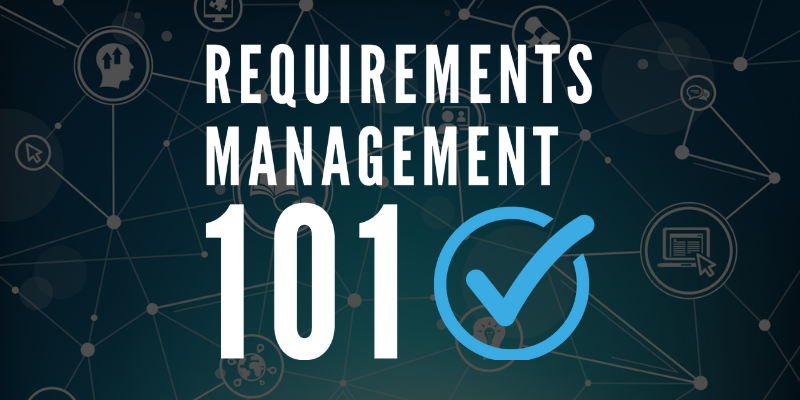6 Reasons You Need Branching And Forking in Requirements Management
Branching and forking are powerful techniques in requirements management that significantly enhance the flexibility, collaboration, and traceability...
%20(200%20%C3%97%20100%20px)%20(800%20%C3%97%20400%20px)%20(11).png)
A common problem in systems engineering is that we often forget to include the impact of reliability, maintainability, availability, and other “ilities.” If reliability, availability, and maintainability (RAM) are not adequately designed into the system, there is a risk that the program will breach acquisition thresholds with significantly higher development or acquisition costs due to resulting corrective actions. These “ilities” can be modeled to a certain extent, but they require more analysis and the use of equations to capture the information needed.
RAM has correlations with logical operations performed by using Boolean logic and probability calculations. RAM is commonly used in reliability block diagrams (RBD), a diagrammatic method for showing how component reliability contributes to the success or failure of a system. There are three types of RBD that are commonly used:
Serial Reliability, or ‘AND Gates,’ will be used for configurations in that if any one of the system components fails, the entire system fails. Conceptually, a series system is one that is as weak as its weakest link. This calculation is:

Parallel Reliability, or ‘OR Gates,’ will be used for configurations where, as long as not all of the system components fail, the entire system works. Conceptually, in a parallel configuration, the total system reliability is higher than the reliability of any single system component. This calculation is:

Load Sharing Reliability, or ‘VOTE Gate,’ is a parallel configuration where one of the system components, as a minimum, is required to be fully operational at the completion time of the mission for the system to “succeed.” This calculation is:

Building Availability and Maintainability on Reliability
Based on the above calculations, reliability is the initial groundwork that other “ilities,” such as availability and maintainability, can be built on. These attributes are not just performance goals—they are essential non-functional requirements that define how well a system will operate in real-world conditions over time.
Availability depends heavily on reliability because a system that fails frequently will inevitably be unavailable more often. Maintainability builds on both by determining how quickly and cost-effectively those failures can be resolved. Together, these three factors form a foundation for long-term system performance, safety, and total lifecycle cost control.
By addressing reliability first, engineers create a stable baseline that makes availability and maintainability more predictable. This proactive approach reduces downstream redesigns, lowers operational risks, and helps ensure compliance with strict industry or defense acquisition standards. When framed as core non-functional requirements, RAM elements become measurable, trackable, and directly tied to system success.
SPEC Innovations wants to include these “ilities,” starting with RAM, within the Innoslate software. Research and development have been an ongoing effort to add these “ilities.” Currently, the Innoslate platform uses its action diagram to perform live simulations with Monte Carlo and Discrete Event simulators. The idea is to add RAM as a feature to the Discrete Event simulator, which could provide a focus on aspects of a system that were overlooked and on the potential slack that could occur within the system (e.g., performance, cost, and time).
Once the reliability of the system is calculated, this could lead to the integration of the data into other portions of RAM. For availability, we can use the simulator’s Gantt chart to track and highlight states of failure. Maintenance can then be generated when failure occurs, as well as provide cost estimation. The possibilities are endless when it comes to adding these “ilities,” especially with Innoslate’s platform. Below is a conceptual wireframe including RAM with Innoslate’s simulator.

“Ilities” are an essential part of MBSE that we work hard to make a priority. They represent a class of non-functional requirements—those aspects of a system that do not directly affect what the system does, but profoundly affect how well it performs, how long it lasts, and how much it costs to operate and maintain.
Reliability reduces the likelihood of failure, availability ensures the system is ready when needed, and maintainability minimizes downtime and repair costs. Other "ilities,” such as scalability, interoperability, and usability, further define a system’s long-term value. Ignoring these requirements early in the design phase can lead to significant delays, cost overruns, and operational risks that are far more expensive to fix after deployment.
Incorporating “ilities” into MBSE from the start creates a holistic design process where technical performance, user needs, and lifecycle sustainability are balanced. At SPEC Innovations, this is not an afterthought—it’s a deliberate strategy to ensure reduced failure, save time, and deliver systems our users can trust.
Ready to streamline your systems engineering process? Try Innoslate today and experience the power of efficient collaboration and documentation. Sign up for a free, sandbox account now!
Have questions about model-based systems engineering or requirements management? Talk to an expert and see how Innoslate can streamline your projects from start to finish.

Branching and forking are powerful techniques in requirements management that significantly enhance the flexibility, collaboration, and traceability...

Validation is concerned with whether the system fulfills its intended purpose and meets the user’s requirements. It answers the question: "Are we...

Would you rather watch instead? Visit the webinar recording!